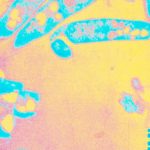Lien vers Pubmed [PMID] – 34643911
Lien DOI – 10.1007/978-1-0716-1779-3_16
Methods Mol Biol 2022 ; 2387(): 163-181
Mycobacterium ulcerans, the causative agent of Buruli ulcer disease, is unique among human pathogens in its capacity to produce mycolactone, a diffusible macrolide with immunosuppressive and cytotoxic properties. Recent studies have shown that mycolactone operates by inhibiting the host membrane translocation complex (Sec61), with an unprecedented potency compared to previously identified Sec61 blockers. Mycolactone binding to the pore-forming subunit of Sec61 inhibits its capacity to transport nascent secretory and membrane proteins into the endoplasmic reticulum, leading to their cytosolic degradation by the ubiquitin:proteasome system. In T lymphocytes, Sec61 blockade by mycolactone manifests as a sharp decrease in the cell’s ability to express homing receptors and release cytokines following activation. Sustained exposure of human cells to mycolactone typically generates proteotoxic stress responses in their cytosol and endoplasmic reticulum (ER), ultimately inducing apoptosis. Here we describe cell-free systems for studying Sec61-mediated protein translocation that allow the impact of mycolactone on the biogenesis of secretory and membrane proteins to be probed. We also describe biological assays of mycolactone-driven inhibition of Sec61 providing rapid and sensitive means to quantitatively assess the presence of the toxin in biological samples.

